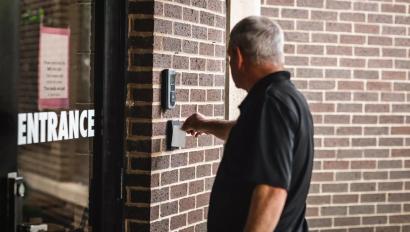Protecting Servers with Biometric Access Control: A Finlays Case Study

A company with over 265 years heritage, Finlays owns and operates tea estates, extraction facilities for tea, coffee and plant extracts, packing facilities and R&D laboratories across four continents.
Finlays had already implemented a PAC access control system for exterior doors, and number code locks were installed on their server room doors. However, upon a security review, they recognized the need to enhance security for their server rooms. The primary objective was to limit access to the server rooms to designated IT personnel only. Since IT staff typically work standard office hours, any access requirements outside of these hours would necessitate sharing the lock code with unauthorized individuals or summoning an IT team member back to the facility.
Finlays had ruled out a card/tag based access control system due to the inherent issues with lost, stolen or borrowed cards, and had decided a biometric system would be the right solution for them. A number of security companies were approached, including Securitas Technology, which were awarded the contract. “It’s a name we knew and we have a lot of Securitas Technology products on site,” states Stephen Firth, Finlay’s Group Senior IT Support Engineer. “We also have a PAC system which shares the same software that the Securitas Technology biometric system runs on, so it meant we could easily add to the existing system and view both using the same software, although they are run as stand alone systems for added security.”
How the project was implemented
Securitas Technology installed ievo® biometric fingerprint readers to four server room doors at Finlays. The system features advanced image reading sensors that take a detailed scan of a finger from the surface and subsurface levels of the skin, to capture a highly accurate digital image whilst protecting against fake and spoof fingerprints. Specific data from the image is converted into a digital template used for fingerprint identification. Providing a user presents a finger that matches a stored user template, then access will be granted. ievo captures clear, clean images, even when surface features are absent or hard to distinguish due to age, dirt, finger pressure and skin or environmental conditions.
Finlays are pleased with the new biometric access control system as it provides the company with the security required but also convenience, as Stephen comments: “now, IT has full control of who enters the server rooms and there is an audit trail. We don’t have to worry about who has keys to the IT office and who knows the code for the server rooms door locks. What’s more, IT can open any door on the system remotely should it be required, rather than having to return to site. With one of the racks on our server belonging to someone else, that’s an important consideration should they need to gain access out of office hours.”























